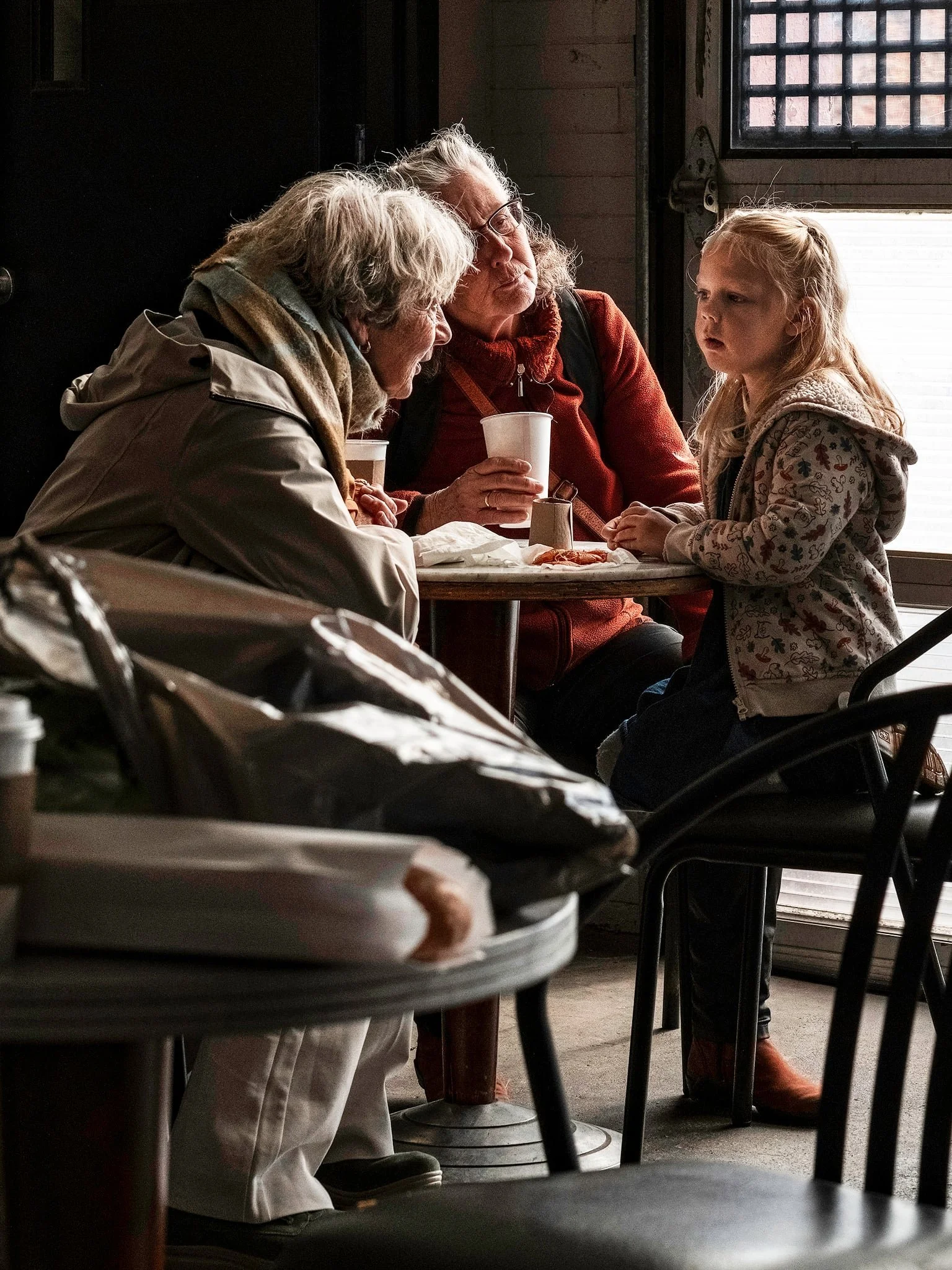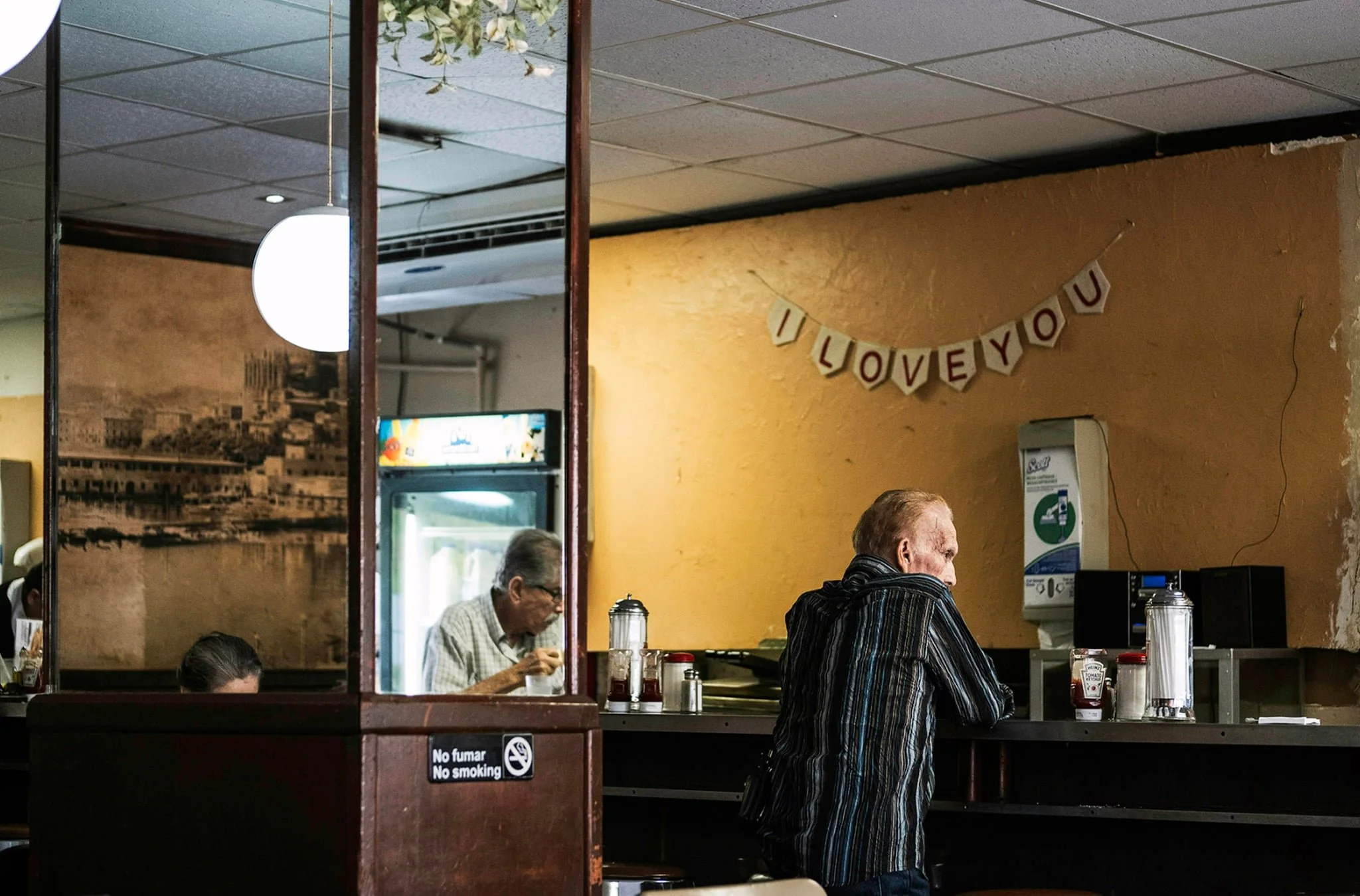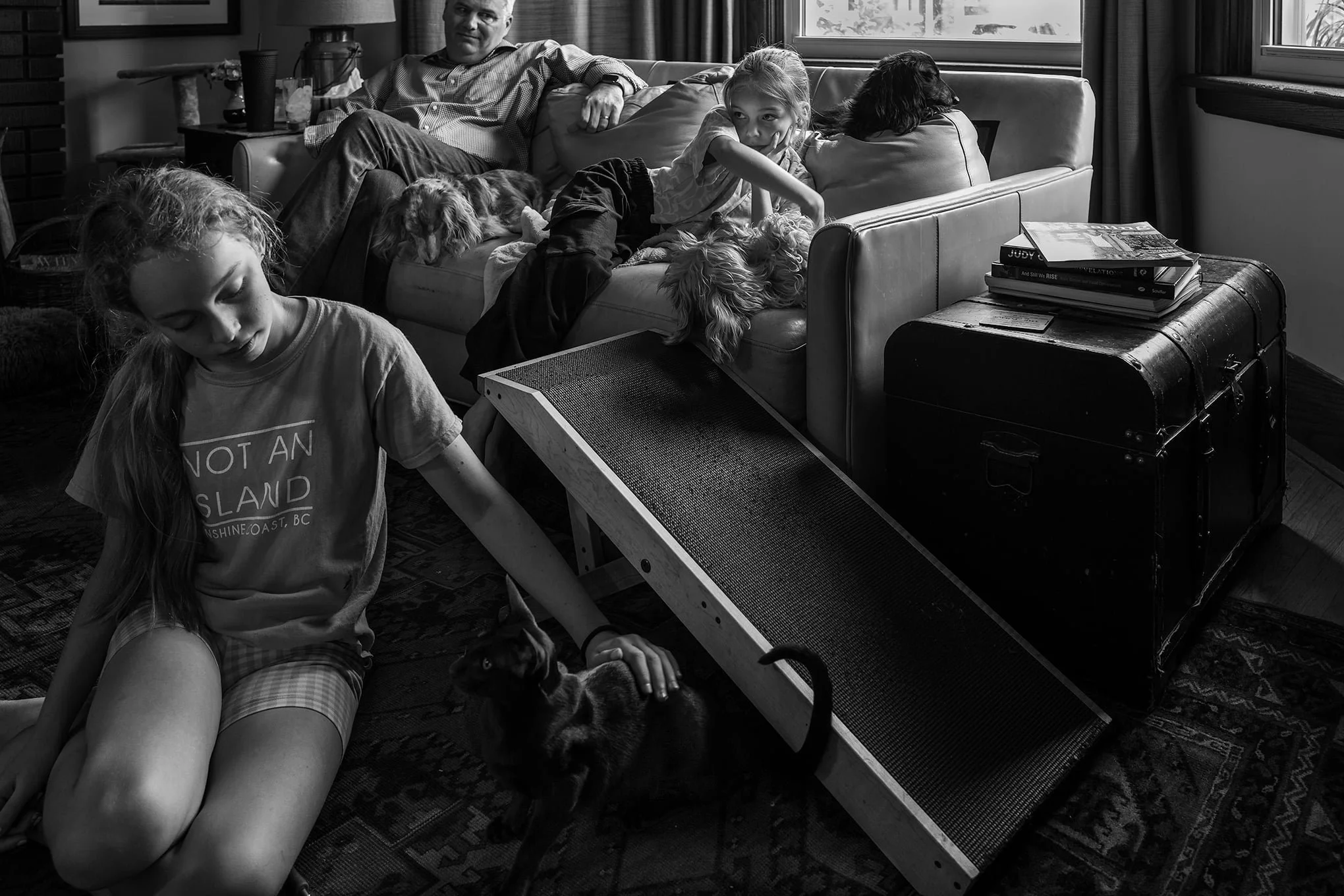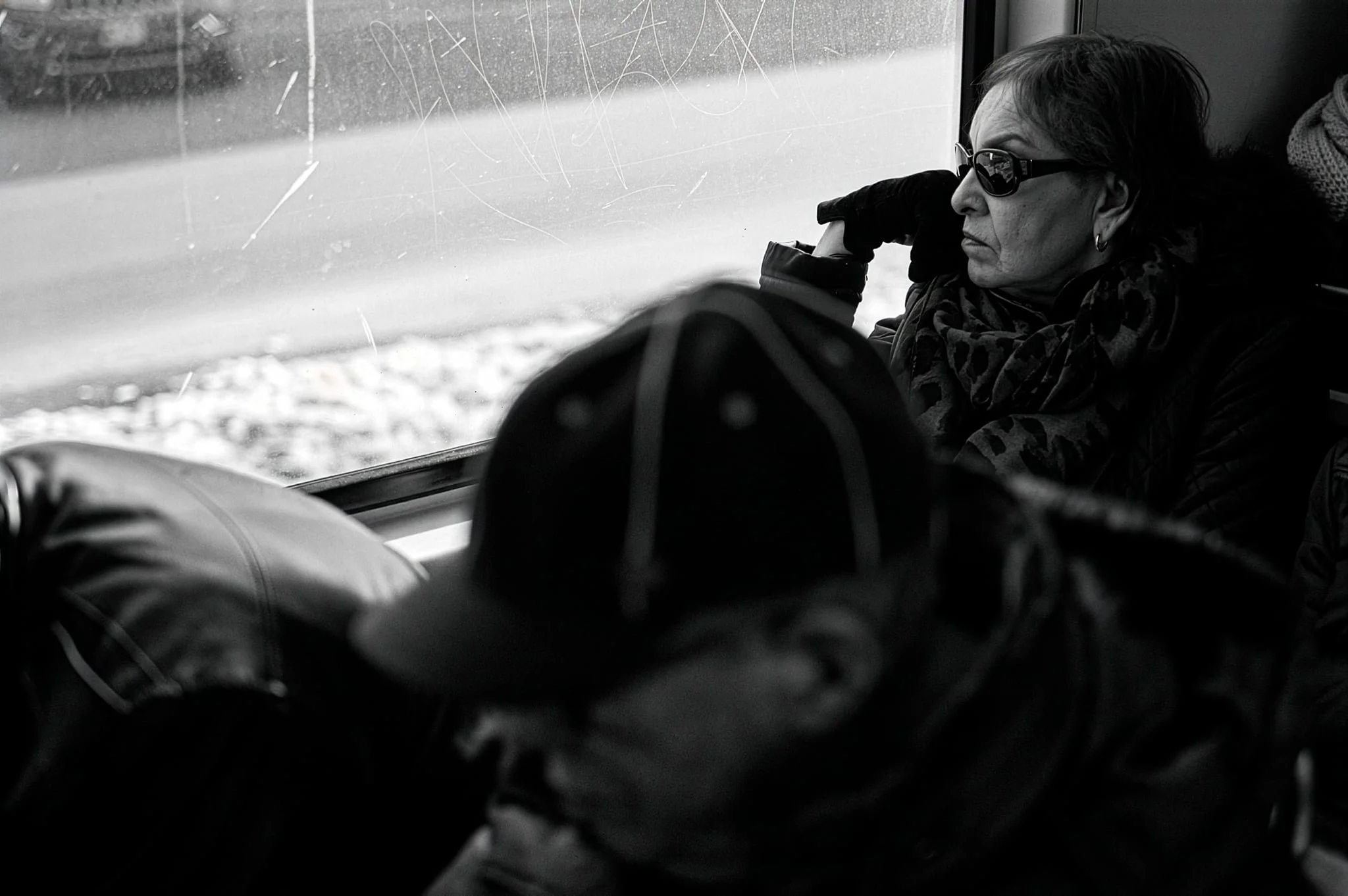#SceneSeen -3
Music and drugs. Washington, DC, early 1970s.
Street Without Joy
For about 65 years, I have been exercising my Constitutional right to photograph strangers in public without asking their permission or engaging with them in any way. If they see and react to me, I don’t make the image. If someone says, with words or gestures, that they don’t want to be photographed, I look for a different image. Why wouldn’t I, or any photographer? William Klein’s iconic photo of a teenager shoving a middle finger in the lens aside, photos of people provoked by photographers may tell us something about the photographer’s lack of imagination and discretion, but they tell us less than nothing about the human condition. My goal, and the goal of traditional street photography – a subgenre of documentary photography, is to make images of life lived in public, not to harass strangers. When friends or students ask if I am a “street photographer,” I respond that I am a “photographer of the mundane,” of those little moments most people never “see” because they see them every day in countless forms. Over the years I have done more and more of this kind of photography, both on my own and for hire – documenting the lives of families, and weddings, and I taught documentary photography and “street photography” at MIT for 17 years. From 2005 to 2018 I worked on a project I call ‘Alone, Together,” documenting the isolation of individuals in the crowds in and around the cars and stations of Boston’s subway system, and while on not a few occasions a subject would see me and turn away, in those 13 years only two people engaged me to object to being photographed.
Over about the last decade I have been thinking more and more about what and why I photograph, and about street photography in general. In fact, as I look back on my images I often find myself asking, “why did I make that image? What was I thinking?” I would contend that most of today’s “street photographers” have little to no knowledge of the foundation upon which their photographic specialty was built, the documenting of life lived in public. They produce nothing more than an endlessly repeating series of tropes signifying nothing and telling us less: images of people smoking; unrecognizable people, often underexposed to nothingness, stepping in and out of splashes of shadow and bright light; images of large breasted woman seen front the front and side; and of woman with large rear ends from behind. All these images tell us is that the photographer lacks the ability to see and has little understanding of street photography. Similarly, there are the countless photographs of “street people,” that tell us nothing of why those people are homeless, photos that contain not a hint of irony or commentary, and which make no attempt to leave the subjects with a shred of dignity. (The instances in which one cannot make a photograph of a homeless person without showing his or her face can be counted on one hand.) And let’s not forget the photos of unattractive people and obese people, images that say nothing but “look at that!” Even worse are the countless street cowboys, mostly young, both male and female, who, in thrall to Magnum photographer Bruce Gilden, seek to get in people’s faces, startling them, popping flashes in their faces, making them look as ugly and unattractive as a flash or wide angle lens can possibly make them. They defend their photographic muggings with the laughable rationalization that their techniques reveal “the true person.”
About a month ago, a photographer friend and I walked into a fast-food place advertising a new kind of dessert donut. Before we even cleared the doorway, we saw a disheveled, thin man laying sprawled on the floor, curled on his side, appearing to be unconscious or dead. There were several employees, helping customers at the counter, and a father and young son apparently waiting for a carryout order to be prepared. No one was paying any attention to the body on the floor. My friend immediately went to the counter and asked an employee what was going on, was told that Emergency Services had been called about 15 minutes earlier, and theoretically were on their way. Given the length of time the young man had been laying on the floor, my friend and I figured there was nothing we could do for him, and we waited to see what would happen.
As the minutes passed, customers came and went, eyes straight ahead, stepping over and around the body. I never leave the house without a camera, and on this evening I had both film and digital cameras in a bag with me. Having a classic street photograph in front of me, I started to reach for the digital. But as I did, a scene from countless classic Looney Tunes cartoons started playing in my head: You know the one, where Sylvester the Cat is about to try to catch and eat Tweetie Bird, and a tiny angel appears on one of Sylvester’s shoulders, while a little horned devil with a pitchfork appears on the other. ‘Don’t do it,’ the angel intones in a high-pitched voice, while the devil growls, ‘Don’t listen to that sucker! Do it! Do it!’ In this case I was Sylvester, the young man on the floor was Tweetie Bird, and the devil was urging me to pull my camera from my bag and get a ‘great shot,’ while the angel urder me, to be a ‘decent human being’ and leave my camera in my bag. The scene in front of me was begging to be photographed; the body was laying on the floor, in front of small tables, with two rows of large white letters on the wall behind the tables spelling out “Good Food Good Mood.” Perfect? Right? I wasn’t at all sure. But that little devil won the debate.
After making two images I went outside and called EMS myself. I explained that there was a body lying on the floor, told them I was at least the second caller, and urged them to show up. About 10 minutes later a fire engine arrived, and several firefighters with an EMS bag entered the restaurant, and it quickly became apparent that the man was just sleeping. As I watched from outside the restaurant, the firefighters lifted the young man up onto a chair, where he became loud and obstreperous, to the point that one of the firefighters called the police, who showed up quite quickly, politely escorted the young man out of the restaurant. When the young man wouldn’t leave the scene quietly, the police handcuffed him and placed him under arrest. As the two cops were walking the young man to their squad card, one asked him if he understood why he was being arrested. “Yah,” he responded, “because I was trying to get my dinner.”
That evening I posted two photos from the evening on my Instagram - @bdcolen – Facebook page, and in several on-line photo groups to which I belong, all of which are “street” oriented. In a few of those groups I accompanied the photos with a paragraph in which I spoke of how torn I was about making the images, and how I had quite consciously decided against photographing the interactions of the EMS workers, and police, with the young man on the floor. I noted that I knew I had a legal right to photograph the entire story, but felt I lacked an ethical one. Had I been on the scene as a journalist, I noted, I would of course have documented the incident from start to finish. But I wasn’t there as a journalist; I was just a guy with a camera.
A number of people responded to the photos and to what I said about them, and one person in particular unknowingly summed up what I think is wrong with “street photography” today: He told me that I – or any photographer – had a right to make the images I hadn’t made, and said that making them is what street photography is all about – “It’s what we do,” he declared. ’ Well if it is, it shouldn’t be.
Which brings me back to the title of these musings – “Street Without Joy,” which also happens to be the title of the late Bernard Fall’s seminal book about the French disaster in Indochina, which preceded the even more disastrous American experience. Granted, the connection between the current state of street photography and what is known in the West as the Vietnam War may not be immediately obvious. But the connection is there. What came to be called street photography began, as the American experience in Vietnam did, with the best of intentions. Photographers such as Helen Levitt, Henri Cartier-Bresson, Robert Frank, Louis Faurer, Gary Winogrand, and countless others, showed us what they saw. They used their eyes and cameras to bring the world to us, whether the fraction of a second they brought us was of children playing in the street on the Lower East Side of Manhattan, a bicyclist racing around a downhill curve, or a man seeming to float upside down above Park Avenue. But like that far away war, street photography has lost its purpose and focus; it has become the art of “gottcha!”
Those who don’t listen to the back and forth between Sylvester the Cat’s devil and angel, who may think that “gottcha!” is what street photography should be about, might do well to introduce themselves to the work of Baldwin Lee. Lee is definitely not a street photographer; he is a fine art photographer who spent about a decade traveling around the American South making posed portraits of poor Black Americans that document their lives. The director of the photography program at the University of Tennessee at Knoxville, during the 1980s Lee would pack his view camera into his car at at every opportunity he had and take off on solo drives through the deep South looking for subjects. There was one trip, however, during which he didn’t make a single image, and he tells about it in an interview included in his recently published monograph, “Baldwin Lee.” Lee explains that he was driving in Georgia, and had yet to make any images, when he pulled up in front of a courthouse and saw a one-armed Black man mowing the lawn. His immediate reaction, he said, was that he should pull over and make a photograph:
“And when I thought about the reaction of mine, I was mortified. I was ashamed. I felt like the worst person in the world. Why am I delighting in the misfortune that this man had suffered? Why did I think the making of a photograph would justify doing something like this?” Lee said he turned around and drove back to Knoxville without making any photos of anything, beating himself up the whole time…”I kept asking about ambition versus responsibility, ambition versus righteousness…”
Would that we all thought about those things with some regularity.
© B. D. Colen 2023










